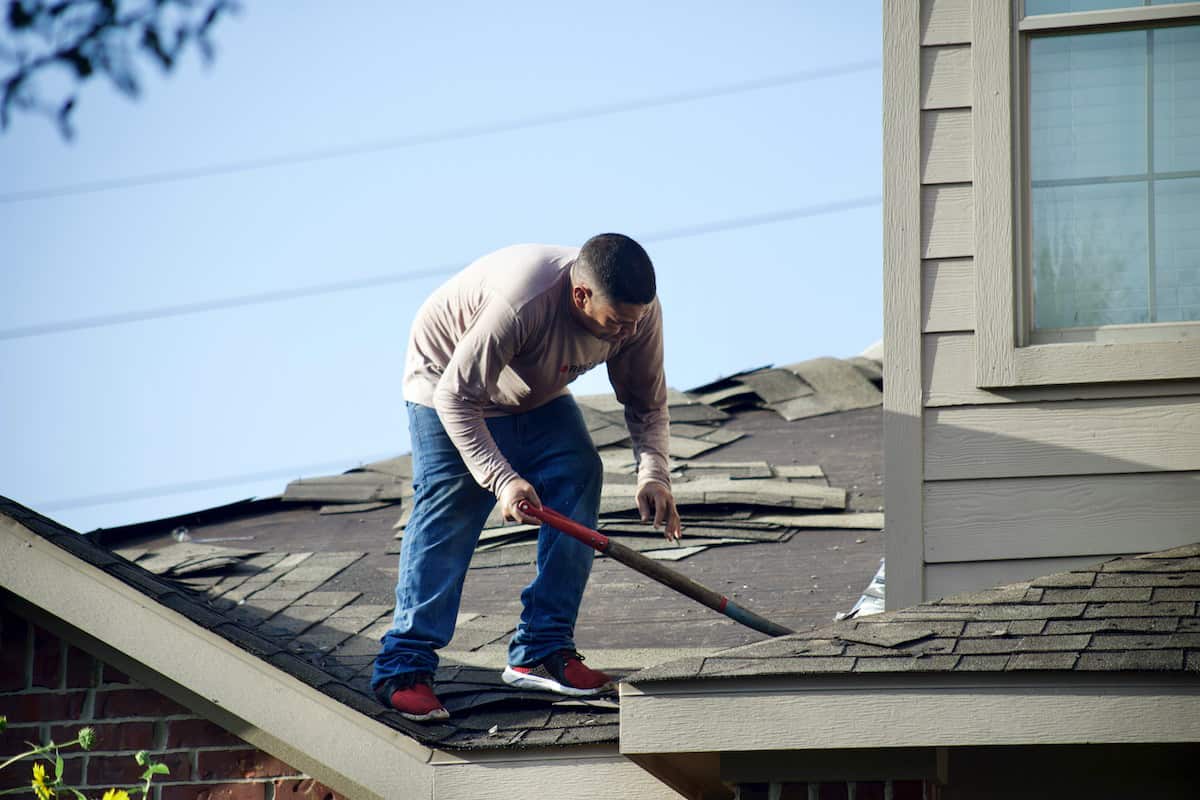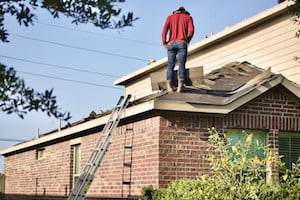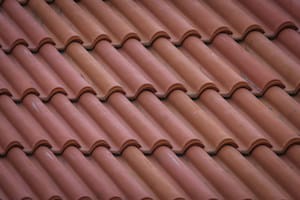
20 Feb DIY Emergency Roof Repair Guide
Discovering a leak in your roof can be a stressful event, but with quick action, you can minimize the damage until professional help arrives. This DIY Emergency Roof Repair Guide is designed to walk you through the steps of assessing the damage on your roof, choosing the right materials for a temporary fix, and applying that fix effectively. Armed with a few basic tools and supplies, you can protect your home from further damage caused by water leaks. Let’s dive in and learn how to tackle roof damage with confidence.
Assessing Roof Damage
Assessing Roof Damage
Roof damage can lead to significant issues inside your home, such as leaks or structural problems. It is essential to assess roof damage promptly to prevent further complications. Here’s how you can effectively inspect your roof for damage.
Supplies Needed:
- Ladder
- Clipboard and pen
- Camera or smartphone
- Binoculars (optional)
- Safety gear (gloves, non-slip shoes, and helmet)
Step 1: Safety First
Before you start, prioritize safety. Wear appropriate safety gear. Ensure the ladder is sturdy and secure. Never attempt to inspect your roof during bad weather.
Step 2: Visual Inspection from the Ground
Start by walking around the perimeter of your house. Use binoculars to get a closer look at your roof. Note any signs of damage such as:
- Missing, cracked, or curling shingles
- Damaged metal flashings around chimneys, vents, or skylights
- Large accumulations of granules from the roof shingles in gutters (looks like coarse sand)
Step 3: Ladder Inspection
Set up your ladder securely against your house. Climb to a point where you can comfortably see your roof without stepping onto it. Look for:
- Broken or missing tiles or shingles
- Signs of moss or algae indicating moisture problems
- Rust on metal parts
- Any debris or blockages in the gutters
Document your findings with a camera or smartphone.

Step 4: Attic Inspection
Inspect your roof from the inside by checking your attic during daylight. Turn off all attic lights. Look for rays of sunlight shining through the top of the house, which indicate holes in the roof. Also, check for signs of water damage or leaks, such as stains or mold on the underside of the roof decking.
Step 5: Document and Decide
Use your notes and photographs to document the roof’s condition. If you find minimal damage, you may choose to conduct some repairs yourself, such as replacing a few shingles or clearing gutters and downspouts. However, significant damage will require professional assessment and repair.
Step 6: Seek Professional Help if Necessary
If your inspection indicates substantial damage, or if you’re unsure of your roof’s condition, it’s wise to call in a roofing professional. They can provide a more thorough inspection and recommend appropriate repairs or replacement if needed.
Conclusion:
Regular inspections are key to maintaining your roof in good condition and extending its lifespan. By following these steps, you can spot potential issues before they result in serious damage to your home. Remember, when in doubt, consult with a professional to ensure your roof remains safe and secure.
Choosing the Right Materials
Supplies Needed for Emergency Roof Repairs
Venturing further into addressing emergency roof repairs requires a thoughtful selection of materials. The right materials not only provide a temporary fix but also ensure durability until professional repairs can be conducted. Let’s dive into the materials best suited for these unforeseen circumstances.
Tarps
Tarps are the go-to choice for an immediate, temporary solution. Selecting a heavy-duty, waterproof tarp will provide the best protection against water intrusion. Ensure the tarp is sizable enough to cover the damaged area plus an additional margin of 3 feet around for secure anchoring.
Roofing Cement
A staple in emergency repair kits, roofing cement offers a strong, waterproof sealant for smaller cracks and leaks. Opt for all-weather roofing cement to ensure effectiveness in various conditions.
Roofing Nails and Staples
Keep a stock of roofing nails and a heavy-duty stapler on hand. These will be essential for securing tarps and temporary patches. Stainless steel or galvanized roofing nails resist rust, providing a more durable solution.
Rubber Sealant Spray
For quick fixes, a rubber sealant spray can seal leaks instantly. This works exceptionally well for hard-to-reach areas or where a precise application is required. Always choose a high-quality, UV-resistant spray to ensure longevity.
Plywood Sheets
In cases of significant damage, plywood sheets can act as a sturdy, temporary patch. It’s crucial to select exterior grade plywood, which can withstand moisture exposure better than interior grades.
Flashing
Metal flashing can be used to divert water from leaky areas, such as around chimneys or vent pipes. Aluminum or galvanized steel flashing offers a durable and flexible option for these repairs.
Roofing Felt
Roofing felt can serve as an extra layer of protection under tarps or plywood patches. This material adds insulation and prevents water from sneaking through minor gaps.
Utility Knife and Caulking Gun
Having a sharp utility knife and a reliable caulking gun will aid in cutting materials to the right size and applying roofing cement or sealants efficiently.
Step-by-Step Guidance for Using Materials
- Tarping
- Stretch the tarp over the damaged area, ensuring it lies flat.
- Secure the edges with roofing nails, and reinforce with heavy-duty staples for added stability.
- Applying Roofing Cement
- Clean the area to be repaired to remove debris.
- Apply the roofing cement generously with a putty knife, ensuring all cracks are filled.
- Sealant Spray Usage
- Shake the can vigorously.
- Spray evenly over the leak, covering it completely.
- Allow it to dry as per the manufacturer’s instructions.
- Plywood Patching
- Measure and cut the plywood to cover the damage.
- Secure it over the area with roofing nails.
- Seal the edges with roofing cement to prevent water ingress.
- Flashing Installation
- Cut the flashing to fit the repair site.
- Nail it in place, and seal the edges with roofing cement or sealant spray.
Conclusion
Armed with these materials and a thorough understanding of their application, you’re better prepared to tackle emergency roof repairs. Remember, these are temporary fixes designed to mitigate damage until professional repairs can be carried out. Always prioritize safety and seek professional help for extensive damage. These steps are meant to empower you with knowledge and solutions in times of need, thereby safeguarding your home from further damage during emergencies.

Applying the Temporary Fix
Continuing from where we left off, let’s discuss how to apply a temporary fix to a damaged roof in a step-by-step manner. This guide assumes that you’ve already taken all necessary safety precautions and have identified the damaged area through visual, ladder, and attic inspections.
Step 1: Prepare the Area
Clear any debris and loose materials from the damaged area. Ensure the surface is as dry and clean as possible for the materials to adhere properly. This might involve gently sweeping or using a leaf blower, being careful not to cause further damage.
Step 2: Select Your Temporary Repair Material
Based on the type and extent of damage, choose the most appropriate material. For small holes or cracks, roofing cement or rubber sealant spray might suffice. Larger damages might require a plywood sheet or a tarp.
Step 3: Apply Roofing Cement
For small holes or cracks:
- Using a utility knife, cut the roofing cement tube and load it into the caulking gun.
- Apply a generous amount of roofing cement over the damaged area, ensuring it’s spread beyond the damage for a secure seal.
- Press down firmly with a putty knife for an even layer.
Step 4: Fixing Larger Damage with Plywood and Tarps
For significant damages:
- Measure the damaged area and cut a plywood sheet slightly larger than the damage.
- Place the plywood over the damaged area and secure it with roofing nails or staples.
- If using a tarp, spread it over the plywood, ensuring it covers the damaged area completely, extending beyond at least 3 feet on all sides.
- Secure the tarp’s edges with 2×4 wooden boards, nailing the boards to the roof to prevent the tarp from blowing away.
Step 5: Seal Edges with Rubber Sealant
For both small and large repairs:
- Spray rubber sealant along the edges of your repair material, whether it be the finished application of roofing cement, the perimeter of a plywood sheet, or the edges of a tarp. This enhances the waterproofing by sealing any gaps.
Step 6: Inspect and Adjust
Step back and inspect your work. Make sure the repair materials are securely in place and the damaged area is entirely covered. Perform adjustments as necessary to ensure a tight seal.
Maintenance Tips
Remember, the fixes in this DIY Emergency Roof Repair Guide are temporary. Monitor the repair, especially after rainstorms or high winds, and plan for permanent repairs as soon as possible. Regular roof inspections can prevent unexpected damages from becoming more serious problems.
Following these steps can help you apply an effective temporary fix to a damaged roof. Stay vigilant, and don’t hesitate to contact professionals if the damage is extensive or if you’re unsure about making the repairs yourself. Your safety and the integrity of your roof should always come first.
Applying a temporary fix to your damaged roof might seem like a daunting task, but with the right approach, it’s something you can definitely handle on your own. Remember, the key is to act quickly to prevent further damage to your home. The steps laid out in this DIY Emergency Roof Repair Guide should help you navigate the process smoothly, from inspecting the damage to applying the patch. While a temporary fix is no substitute for professional repairs, it can provide your home with the necessary protection in the interim. Keep these tips in mind, and you’ll be well-prepared should you ever face this situation.


Sorry, the comment form is closed at this time.